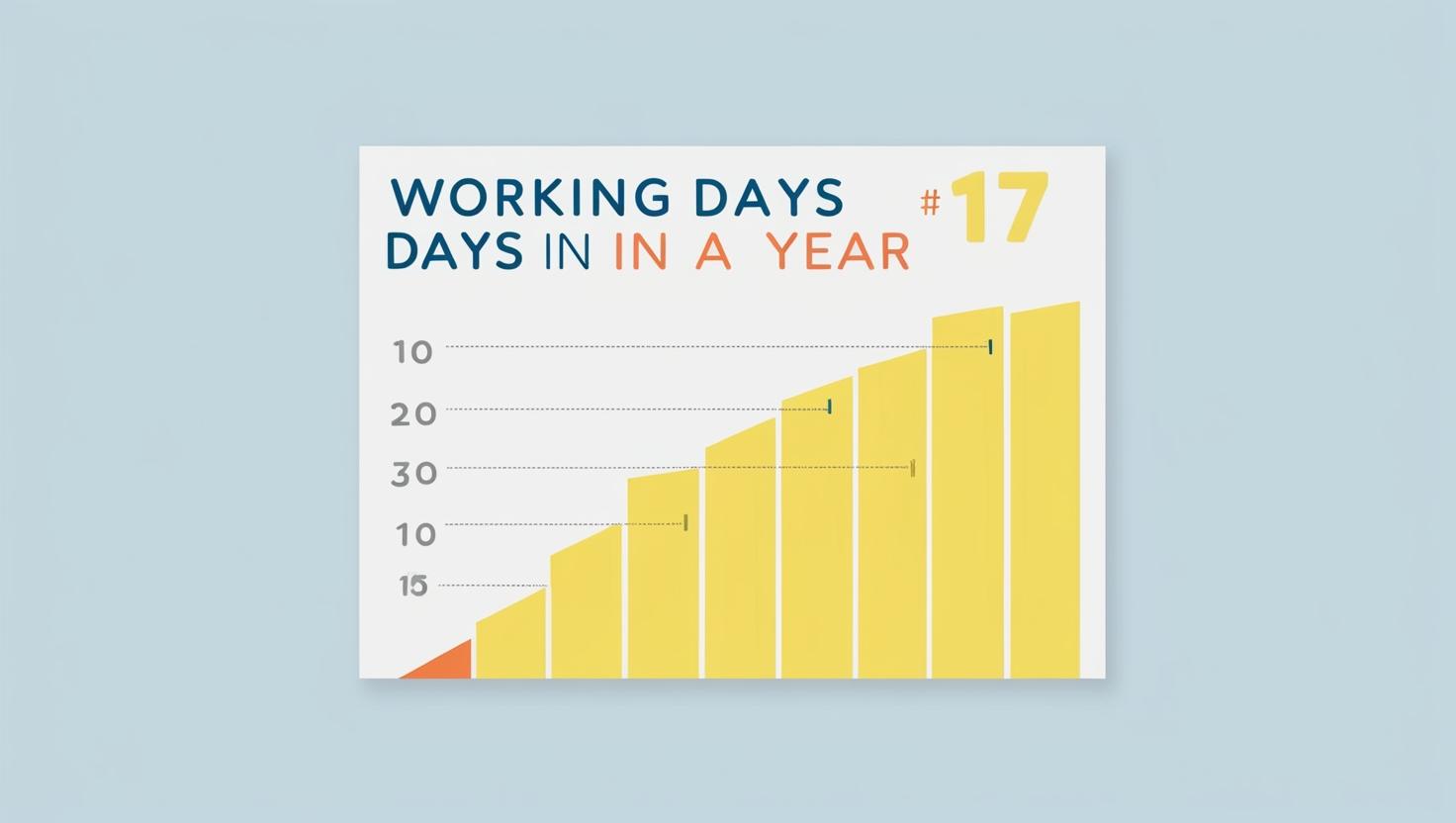Working days refer to the days when businesses and offices are open for work. These typically exclude weekends and public holidays. The total number of working days in a year can vary depending on the country, industry, and specific work policies.
Basic Calculation of Working Days
A year usually has 365 days (or 366 in a leap year). If we consider a standard workweek of Monday to Friday, there are typically 52 weeks in a year. Multiplying 52 weeks by 5 working days per week gives 260 working days. However, public holidays and other non-working days reduce this number.
How Public Holidays Affect Working Days
Public holidays are specific days when businesses and government offices close. The number of public holidays varies from country to country. For example:
- In the United States, there are around 10 federal holidays.
- The United Kingdom has about 8 public holidays.
- India has a mix of national and regional holidays, with some states observing up to 20 holidays.
If a country has 10 public holidays, the total working days decrease from 260 to 250. The exact number depends on whether the holidays fall on weekdays or weekends.
Weekends and Their Impact on Workdays
Most businesses follow a Monday-to-Friday schedule, making Saturday and Sunday non-working days. However, some industries operate on different schedules. For example:
- Retail and hospitality businesses often work on weekends.
- Some government offices may have half-days on Saturdays.
- In some countries like the UAE, the workweek runs from Sunday to Thursday.
How Leap Years Affect Working Days
A leap year adds an extra day to the calendar, making the total 366 days instead of 365. If this extra day falls on a weekday, it adds one more working day to the year.
Industry-Specific Work Schedules
Different industries have varying work schedules. Here are a few examples:
- Corporate Offices: Usually follow a Monday-to-Friday schedule with weekends off.
- Healthcare: Hospitals and emergency services operate 24/7, meaning employees may have rotating shifts.
- Factories and Manufacturing: Some factories run on shift systems, meaning employees may work on weekends.
- Freelancers and Remote Workers: Often set their own schedules, leading to flexible working days.
The Role of Paid Leave and Vacation Days
Employees are often given paid leave, reducing the actual number of working days. Standard paid leave policies include:
- Annual leave (ranging from 10 to 30 days, depending on the country and company policy).
- Sick leave, maternity/paternity leave, and personal days.
- Unpaid leave options for emergencies.
Global Variations in Working Days
Different countries have different numbers of working days due to cultural, religious, and legal reasons. Here are a few examples:
- USA: Around 250 working days after accounting for federal holidays.
- Germany: Typically 230-240 working days due to more vacation days.
- Japan: Known for long work hours, but public holidays and paid leave affect the total working days.
- France: Employees often work around 218-225 days due to generous vacation policies.
The Influence of Remote Work and Flexible Hours
With the rise of remote work, the definition of working days has changed. Many companies now offer:
- Flexible work hours, where employees choose their working days.
- Compressed workweeks, where employees work longer hours for fewer days.
- Remote work setups, allowing people to work from different locations.
How Overtime Affects Working Days
Some employees work beyond regular hours, increasing their actual working days. Industries like healthcare, IT, and law enforcement often require employees to work overtime, sometimes including weekends and holidays.
The Impact of Productivity on Workdays
The number of working days does not always equal productivity. Some companies focus on output rather than hours worked. Countries like Denmark and the Netherlands emphasize efficiency, allowing shorter workweeks while maintaining high productivity.
Work-Life Balance and Its Role in Working Days
Many people prioritize work-life balance. Some companies have introduced:
- 4-day workweeks, reducing total working days while keeping salaries the same.
- Remote Fridays, where employees work from home to reduce commuting stress.
- Flexible vacation policies, letting employees take time off as needed.
Conclusion
The number of working days in a year depends on multiple factors, including weekends, public holidays, industry norms, and company policies. While the standard number is around 250 days, variations exist worldwide due to different cultural and legal practices. Understanding these factors helps both employees and employers manage their time effectively.
